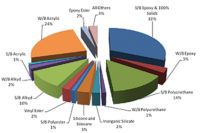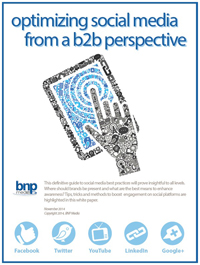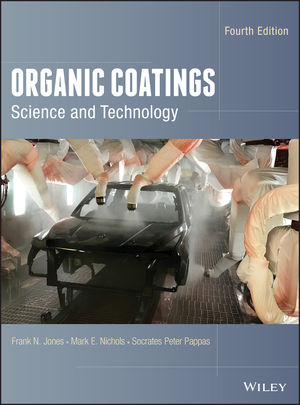STRATEGIC SOLUTIONS: Where Will You Be When the Recession Ends?
A
company’s actions now can affect its future success.

Where will you be when the recession ends? This is not a rhetorical question. We are currently living in a transformational period that will affect not only our industry but our world. When this recession ends, much will look the same - but don’t be fooled. Governments around the globe are in the process of spending untold amounts of money on infrastructure improvements, alternative-energy generation, programs that will reward the development of advanced manufacturing strategies, and more. It is during these times that dinosaurs perish, yesterday’s common practices become passé, and companies that are perceptive and proactive prosper.
The past two decades have been a period of creative stagnation for most of the world’s chemical-based manufacturing industries, including adhesives and sealants. However, some innovation has occurred; as a result, some interesting and worthwhile products have been introduced. For example, reactive polyurethane hot melts are replacing solvent-based contact cements and epoxies in panel bonding. In addition, conductive and thermal dissipative epoxies have replaced solders. Unfortunately, these are only incremental improvements: they may seem new and different, but they are not transformational.
Less money is being spent on research and development. In fact, R&D spending is 60-70% of what it was 10-15 years ago, and what has been funded is largely tactical in nature: incremental improvement focused on value maintenance rather than the strategic creation of value-added platform technologies and truly new products. Unfortunately, there never seems to be a good time to team up the R&D and marketing departments and direct them toward the future. During good times, all employees are needed to service current business. When things are slow, workforces are reduced, and all available R&D and marketing resources must concentrate on producing results for the current quarter. However, slow times are the perfect time to engage the best marketing and R&D people in strategic planning, and to act to ensure a more secure and profitable tomorrow.
During slow times, idle production lines can be used to look at new products. In addition, testing laboratories are able to evaluate new technological concepts and prototype products. Far-sighted companies might choose to increase technical and market research during slow times rather than reduce them. The organizations that will emerge from the global recession and succeed in the future are the ones currently investing in marketing resources, using either inside personnel or outside firms to detect and define how things are changing during this transformational period, and determining what will be needed when things turn around. The far-sighted companies will translate this market research into future technologies, such as those green, energy-efficient, low-carbon-footprint, low-emission, higher-performing products manufactured wholly or in part from renewable resources that will both meet future needs and dominate future trends.
In the future, it will be increasingly difficult for major durable-goods manufacturers to avoid the environmental and economic pressures placed on them by both the global regulatory community and consumer demands and perceptions. Automobiles will need to be lighter and more environmentally friendly; adhesives and sealants will be required to achieve this, especially with regard to strength-to-mass ratios. The same will be true for other adhesive and sealant applications: from flexible packaging to infrastructure projects, both new and repair; from medical applications to PSAs; from aerospace to the proposed new digital electricity grid. Increased use will be made of dissimilar materials that will need to be bonded. In many cases, this will mean new technology that meets regulatory and consumer expectations for sustainability and “green-ness.”
So, where will you be when the recession ends? It all depends upon what you are doing right now.
For more information, call (513) 469-7555 or visit www.chemquest.com.

Nissan Altima Hybrid
Photo source: www.newscom.com
Photo source: www.newscom.com
Where will you be when the recession ends? This is not a rhetorical question. We are currently living in a transformational period that will affect not only our industry but our world. When this recession ends, much will look the same - but don’t be fooled. Governments around the globe are in the process of spending untold amounts of money on infrastructure improvements, alternative-energy generation, programs that will reward the development of advanced manufacturing strategies, and more. It is during these times that dinosaurs perish, yesterday’s common practices become passé, and companies that are perceptive and proactive prosper.
The past two decades have been a period of creative stagnation for most of the world’s chemical-based manufacturing industries, including adhesives and sealants. However, some innovation has occurred; as a result, some interesting and worthwhile products have been introduced. For example, reactive polyurethane hot melts are replacing solvent-based contact cements and epoxies in panel bonding. In addition, conductive and thermal dissipative epoxies have replaced solders. Unfortunately, these are only incremental improvements: they may seem new and different, but they are not transformational.
Less money is being spent on research and development. In fact, R&D spending is 60-70% of what it was 10-15 years ago, and what has been funded is largely tactical in nature: incremental improvement focused on value maintenance rather than the strategic creation of value-added platform technologies and truly new products. Unfortunately, there never seems to be a good time to team up the R&D and marketing departments and direct them toward the future. During good times, all employees are needed to service current business. When things are slow, workforces are reduced, and all available R&D and marketing resources must concentrate on producing results for the current quarter. However, slow times are the perfect time to engage the best marketing and R&D people in strategic planning, and to act to ensure a more secure and profitable tomorrow.
During slow times, idle production lines can be used to look at new products. In addition, testing laboratories are able to evaluate new technological concepts and prototype products. Far-sighted companies might choose to increase technical and market research during slow times rather than reduce them. The organizations that will emerge from the global recession and succeed in the future are the ones currently investing in marketing resources, using either inside personnel or outside firms to detect and define how things are changing during this transformational period, and determining what will be needed when things turn around. The far-sighted companies will translate this market research into future technologies, such as those green, energy-efficient, low-carbon-footprint, low-emission, higher-performing products manufactured wholly or in part from renewable resources that will both meet future needs and dominate future trends.
In the future, it will be increasingly difficult for major durable-goods manufacturers to avoid the environmental and economic pressures placed on them by both the global regulatory community and consumer demands and perceptions. Automobiles will need to be lighter and more environmentally friendly; adhesives and sealants will be required to achieve this, especially with regard to strength-to-mass ratios. The same will be true for other adhesive and sealant applications: from flexible packaging to infrastructure projects, both new and repair; from medical applications to PSAs; from aerospace to the proposed new digital electricity grid. Increased use will be made of dissimilar materials that will need to be bonded. In many cases, this will mean new technology that meets regulatory and consumer expectations for sustainability and “green-ness.”
So, where will you be when the recession ends? It all depends upon what you are doing right now.
For more information, call (513) 469-7555 or visit www.chemquest.com.
Links
Looking for a reprint of this article?
From high-res PDFs to custom plaques, order your copy today!






